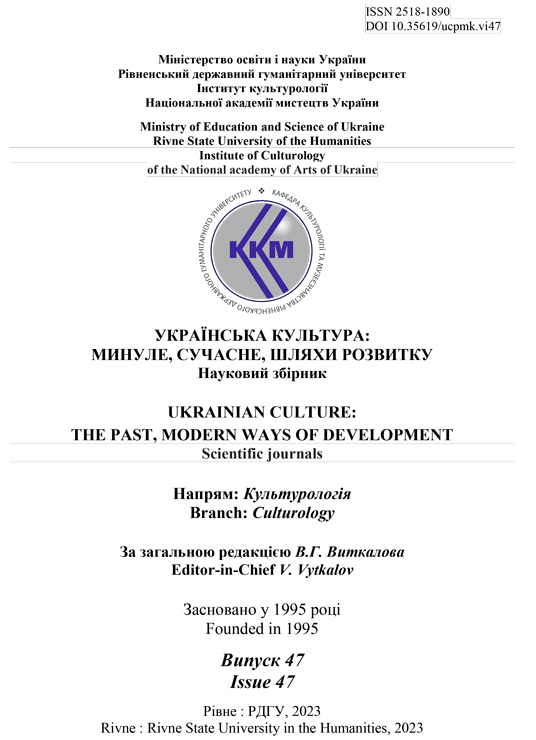PRESERVATION, INTERPRETATION AND PROMOTION OF CULTURAL HERITAGE BY MUSEUMS (ON THE EXAMPLE OF THE ESTONIAN NATIONAL MUSEUM)
DOI:
https://doi.org/10.35619/ucpmk.v47i.732Keywords:
Estonian National Museum, museum collection, visitor, exhibition, preservation, interpretation and promotion of cultural heritage.Abstract
The publication analyzes the latest approaches to the activity of a museum institution, using the example of the Estonian National Museum, in the context of preservation, interpretation and actualization of cultural heritage. The practice of preservation of museum monuments is outlined and the interrelationship of all areas of work with the collection is indicated.
The process of digitization of the museum fund of Estonia was characterized, namely: the Estonian electronic accounting system of museum objects MuIs and its accessibility for various categories of information consumers were described.
Also highlighted a successful key to uncovering history in the exhibition (both in the «Meetings» and «Echoes of the Urals» projects) through multivocality, the biographical method, and museum means of cultural heritage interpretation.
The authors draw attention to the formation of the Estonian National Museum as a socially responsible institution.
The article emphasizes the promotion of the Estonian National Museum through various forms of attracting visitors (in particular through training, workshops) and presenting material in the exhibition space, scientific publications, on the website and in social networks. It is noted that cultural heritage is actualized through advertising and souvenir products.
The study highlighted the use of an integrated approach to the preservation, interpretation and actualization of cultural heritage, which allowed the Estonian National Museum to become an important center of national culture and to be a competitive and socially responsible institution.
Curatorial practices and the use of information and communication technologies used by the Estonian National Museum in exposition and exhibition work require further analysis.




